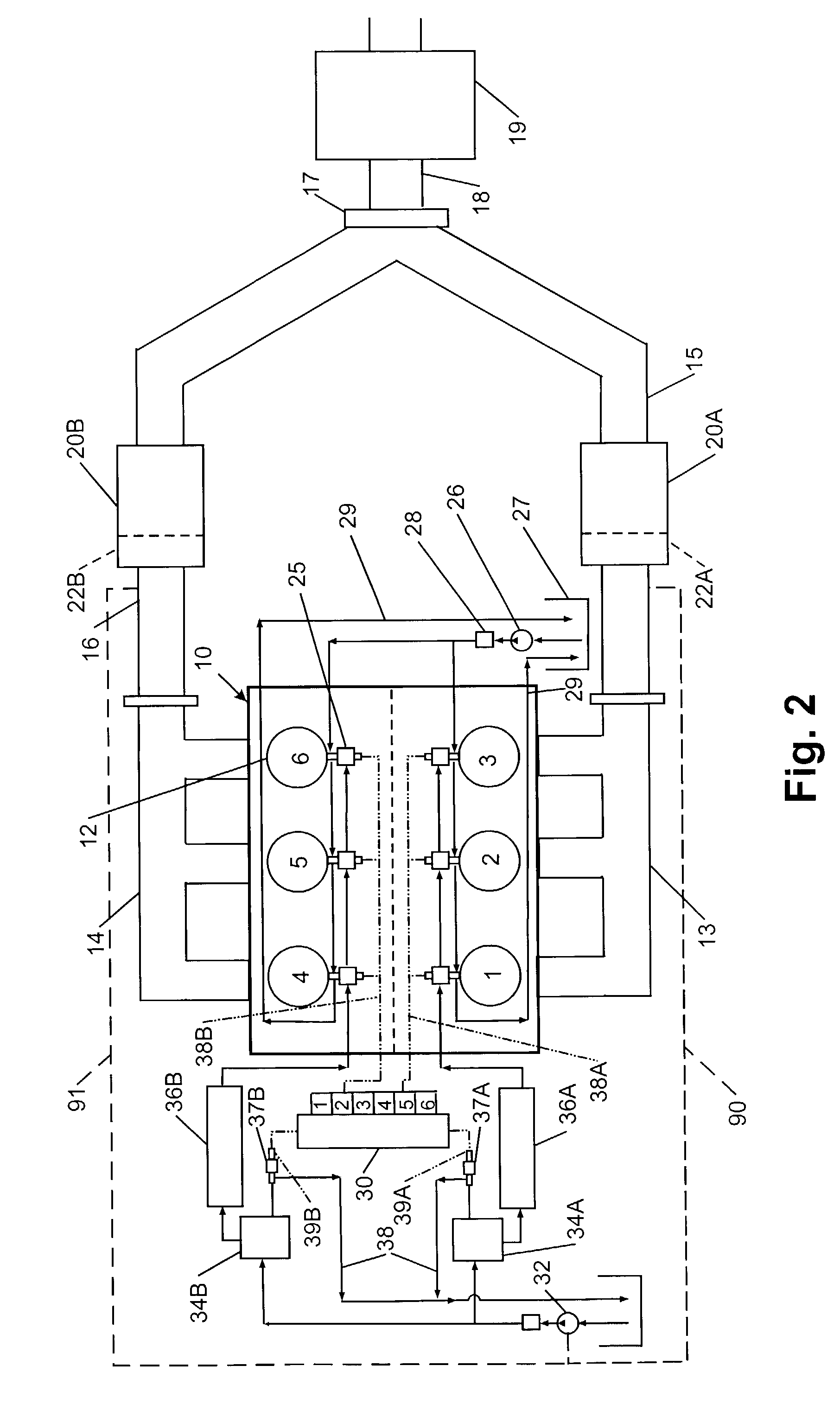Emission control system for vehicles powered by diesel engines
- Summary
- Abstract
- Description
- Claims
- Application Information
AI Technical Summary
Benefits of technology
Problems solved by technology
Method used
Image
Examples
Embodiment Construction
[0048]Referring now to the drawings wherein the showings are only for the purpose of disclosing a preferred embodiment of the invention and not necessarily for limiting the same, there is shown in FIG. 2 one schematic representation of a preferred embodiment of the inventive emission control system. In FIG. 2 there is depicted a multi-cylinder diesel engine 10 having two banks or pluralities of cylinders 12, with each cylinder bank exhausting products of combustion to an exhaust manifold 13, 14. For FIG. 2 cylinders 1, 2 and 3 make up the “first” or “A” cylinder bank and exhaust their combustion products into first exhaust manifold 13 and cylinders 4, 5 and 6 make up the “second” or “B” cylinder bank and exhaust their products of combustion into second exhaust manifold 14. First exhaust manifold 13 is in fluid communication with a first exhaust leg 15 and second exhaust manifold 14 is in fluid communication with a second exhaust leg 16. Each exhaust leg 15, 16 communicates with an i...
PUM
 Login to View More
Login to View More Abstract
Description
Claims
Application Information
 Login to View More
Login to View More - R&D
- Intellectual Property
- Life Sciences
- Materials
- Tech Scout
- Unparalleled Data Quality
- Higher Quality Content
- 60% Fewer Hallucinations
Browse by: Latest US Patents, China's latest patents, Technical Efficacy Thesaurus, Application Domain, Technology Topic, Popular Technical Reports.
© 2025 PatSnap. All rights reserved.Legal|Privacy policy|Modern Slavery Act Transparency Statement|Sitemap|About US| Contact US: help@patsnap.com



